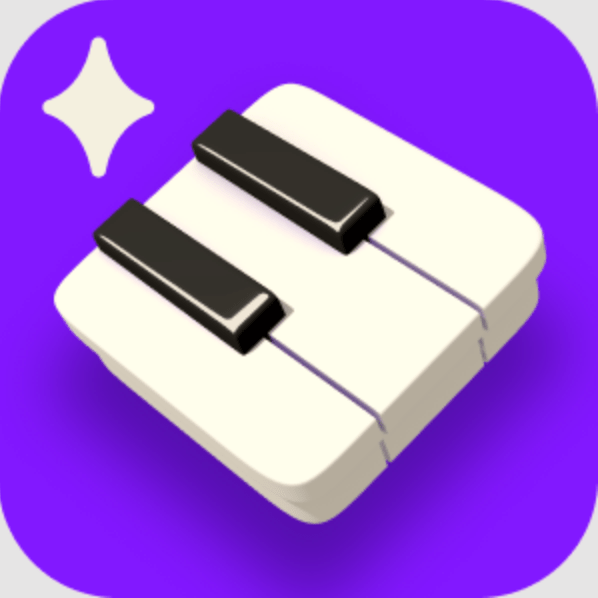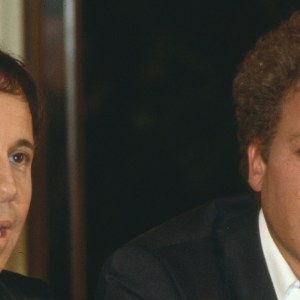We've come a pretty long way since I first sat at the piano bench as a six-year-old kid. Gone (mostly) are the days of a matronly old lady rapping you on the knuckles, correcting your posture, and (shudder) that metronome—tick, tick, tick.
In-person lessons, of course, are still totally a thing—one hopes the teachers are cooler these days—but they're really pricey, and one hundred-dollar lesson a week isn't likely to get you anywhere within a reasonable timeline. If you're looking to get started playing piano quickly and cheaply, you're more than likely going to turn to one of the many piano learning apps that are available for mobile and tablet.
Simply Piano is one such app, and it's a really great one for beginners who are starting out with little or no experience. I’ve been spending a little time every day with Simply Piano, and it’s been a really positive experience that’s gotten me well on my way to sight-reading sheet music and achieving various other musical goals.
I'm a lifelong musician—mainly a guitarist. As a pianist, though, I'm mostly self-taught, with only rudimentary skills and technique. In this review, I’ll walk you through my experiences with the app, describing the lessons and workflow. I’ll point out what works for me, what doesn’t, and together, we’ll determine whether or not learning the piano with Simply Piano is the right choice for you and your goals.
Let’s get started!
Quick Overview
SPECS:
- Number of Courses: 33+
- Members Community: Yes
- Downloadable Content: Yes
- Price: Starts at $119/Year Subscription
- Free Trial: Yes, 7 days
- Family Plan: Yes
What is Simply Piano?
Simply Piano is a course brought to us by Simply, who also makes Simply Guitar (review here), Simply Sing, and Simply Draw. Their aim is to make learning a new skill as easy and affordable as possible, with user-friendly mobile apps that are great for the whole family.
Simply Piano is their flagship course, and it's exemplary of this mission. The app is great for visual learners and younger folks, and since it's designed expressly with mobile and tablet in mind, it's perfect for quick and easy practice—just plop your phone down on your music stand where you'd normally have your sheet music. Plans start at $119/year, which of course adds up to mere pennies per day. Practice every day, and you'll not only get your money's worth—you'll also learn to play the piano quickly and effectively.
There's a members community with over 250,000 members that you can use as an additional resource, and downloadable sheet music that you can use to practice offline, once you get the hang of things.
One of Simply Piano's best features is its family plan. You can set up multiple separate user profiles, so everyone in the family can learn piano at the same time, but at their own pace. I already mentioned the app is great for kids, so if you have a family, I highly recommend the splurge on this plan and give your whole family the gift of piano lessons. It's really affordable, and you and your kids will learn lasting skills, opening up a relationship with music that will provide a lifetime of joy and fulfillment. One year of Simply Piano could change your whole life—talk about a bang for your buck!
Getting Started
In order to get started using Simply Piano, you'll first need to download the app, select your plan, and set up your user profile or profiles. So you're going to need a smartphone or tablet, plus (duh) a keyboard. Simply provides the option of either plugging in a MIDI keyboard to your device (the more accurate option, but requires separate purchase of a cable) or just positioning your phone so it can "hear" your instrument.
You'll fill out a series of questions, such as your age, music preferences, and learning goals, and then you're off to the races!
Simply Piano starts off, well, simply. Each lesson starts out with a brief video intro that explains what you will be learning in the unit. You’ll begin with Piano Basics, which pretty much just orients you at middle C on the keyboard.
You'll work through some simple exercises with C, D, and E—the first three notes, which are enough to get started with some simple melodies—and get used to sticking your first three fingers to their “homes” on the keyboard. (There’s an exercise using the “Blue Danube Waltz” that I thought was really funny—I have had a lot of moments using Simply Piano that made me giggle a bit—pure joy).

When you make mistakes, as you inevitably will, there’s just a sort of gentle correction. The note turns red, and it slows down the tempo—it kind of just patiently waits for you to hit the right note. It’s nice, and really the app doesn’t require too much precision, at least at the get-go. So it’s not super discouraging when you screw up—no ruler across the knuckles.
The best part is, you’re basically training to sight-read right away. It shows you the notes on the staff, as well as on a visual graphic of a keyboard, so you immediately start to associate those sights with their sounds. This is an essential component of ear training as well: your brain just sort of files those sounds—and their corresponding visuals—into the same folder. This especially applies to younger people and kids, whose brains are more “plastic” and basically have superpowers of memory and learning. But even grown folks like me, with a little persistence, can learn to read (and hear) music this way.

As I said, I have always wanted to learn to sight-read. And as I plunked my way through the melody of Sting’s "Every Breath You Take," (giggling) I couldn’t help but think—"am I really reading music? This is awesome!"
Courses and Curriculum
Once you move on from Piano Basics, you'll begin Essentials I. This course covers Rhythm (reading different types of notes, i.e. quarter, half, whole, rest), left hand basic chords, and beginning playing with both hands at once, including some simple basslines.
Once you finish Essentials I, it's time to move on to the real meat and potatoes of the app: Paths. Simply Piano's curriculum is divided into two Paths: Soloist and Chords. This is where players can decide what kind of piano player they want to be.
The Soloist Path is for aspiring players who want to execute classical pieces and hone technique, complex rhythms/syncopation, and more. The Chords Path, on the other hand, is for folks who want to accompany pop, rock, and jazz songs—better for singers who are learning to play to accompany themselves.

Since I already know how to play chords and accompany myself (self-taught), I was excited to choose the Soloist Path and finally start learning classical pieces and better technique. But you do you!
Songs
After getting about halfway through Essentials 1, you'll unlock the song library. The first song I got access to was "Let It Go," from Frozen. I only kind of know this song from the awesome punk rock dad version, so I was going in more or less blind—not really recognizing it in its original, slow, Disneyfied iteration. Ideal for putting my new sight-reading skills to the test! It didn't go so great...

But also, not terrible! It's a really fun way to practice songs—you can either sharpen your ear/hand coordination on songs you know, or hone your sight-reading skill on ones you don't. Also, I told it I like Disney songs, so... yeah. You might get something different for your first, depending on what genres you selected when setting up your profile. There's Rock, Country, Hip Hop, R&B, Jazz, Holiday, and lots more. (Next was Imagine Dragons, which I have to say I was not too pumped jazzed on...)
As you go along, you'll unlock more songs that you can practice along to.

5-Minute Workouts
Simply Piano not only provides a structured curriculum and song lessons—there's also an option for "5-minute workouts" that are there to help you get some quick practice in without committing to a full lesson.
My first 5-minute workout was really exciting—I was really sight-reading music, without any help, within just a few minutes of starting out! I think anyone could learn to read and play music this way.
There’s also a name the notes exercise, which was easy for me because I already knew this—but I could see it being really helpful to learn in tandem with the other exercises.

Ear training is very important to learning an instrument, and so I was really pleased to see this featured among the exercises. It plays you a note, and you have to repeat it just based on the sound. I could see this being really tough if you’re starting out, but the gentle nudges when you mess up aren’t so painful.
When it plays little snippets of singers playing real melodies, with the prompt to repeat the line, it’s really satisfying to nail one—it feels like really playing music, rather than pushing buttons in a game.
What Could Be Improved
Sometimes the app seems to have a tendency to mishear notes, which can probably be avoided using the MIDI connection option, which sadly I didn’t have on hand and so was not able to use. But I wonder too if it was actually my bad after all, like holding the notes too long or just getting the timing wrong in general.
Which, on the subject of timing—maybe I haven’t gotten far enough yet, but initially getting the timing right is a little hard, and it’s tough to discern whether the penalty is for the note you hit, or the time at which you hit it.
But I kind of struggle with the Guitar Hero/game aspect of playing music along with an app in general. That's because hitting the notes "on time" often seems really rigid and unmusical to me, due to my being a more experienced player. I could see it being useful for beginners, but eventually you need to develop your own sense of feel and rhythm, and I fear playing on the rigid timing of the game will make that more difficult.
I bombed over and over again on my Imagine Dragons song lesson because I kept trying to match the syncopated rhythm of the singer (rather than the stiff, on-the-beat quarter notes displayed on the sheet music), and that made me sad. Especially because it was Imagine Dragons.
That being said, I expect that as you develop as a player and advance within the game, the sheet music will start working in more complex rhythms and the playing will feel and sound more natural.

You also can't skip ahead, so more experienced players like me will just have to tough out the early lessons until you get to where you belong. It's very damaging to the ego, and I'm anticipating a lengthy and painful recovery (practicing along to Imagine Dragons until I get it right. "Demons," indeed).
All in all, I'd say all these criticisms really just point to one thing: Simply Piano is designed for brand-new players, period. Pianists with some experience looking to brush up on skills might want to look elsewhere.

Verdict
Simply Piano is an awesome piano learning app for beginners looking to get started right away learning to read music, establishing good technique, and playing their favorite songs or classical pieces within a relatively short period.
And even though I'm not a total beginner, I had a lot of fun with it anyway, not to mention learned a ton. I think I'm even finally going to get the hang of sight-reading after all these years. That is, if I can continue to endure the judgemental glare of the Imagine Dragons guy as I screw up his song for the 50th time.



I really appreciated this in-depth review of Simply Piano! The insights on its features and learning approach are super helpful. I’ve been considering trying it out, and now I feel more confident about giving it a shot. Thanks for sharing your experience!
I found your review of Simply Piano really insightful! It’s great to see a detailed breakdown of its features and how it compares to other apps. I’m considering starting my piano journey, and your thoughts on its user-friendliness have definitely helped. Thanks for sharing!
This review really helped me weigh the pros and cons of Simply Piano! I appreciate the detailed insights and personal experiences shared. It’s encouraging to see how the app can cater to beginners like me. Thanks for the thoughtful analysis!
I’ve been using Simply Piano for a few months now, and I have to say it’s been a game changer for my playing! The interactive lessons make learning so much fun, and I love how it tracks my progress. Great review, it really captures the app’s strengths!
Great review! I’m curious about the practice features you mentioned. Have you noticed a difference in your playing since using Simply Piano?
Great overview of Simply Piano! I’ve been using it for a few months now, and I love how intuitive the app is. The progress tracking really keeps me motivated, and the song selection is impressive. Looking forward to trying the new features mentioned in your review!
I found your review of Simply Piano really insightful! It’s great to see how it adapts to different skill levels. I’m considering picking it up, especially after hearing about the engaging interface and the variety of songs available. Thanks for sharing your experience!
I found this review really insightful! I’ve been considering trying Simply Piano for a while now, and your breakdown of its features and user experience has definitely helped me make a more informed decision. Thanks for sharing your thoughts!